Did you know that over 60% of urban trees show signs of stress every year , yet most homeowners miss the early warnings until it’s too late for their trees to recover? In the heat of summer, your beloved backyard trees can face silent threats that—if left unnoticed—lead to dead branches, stunted growth, or even tree death . Spotting signs of tree stress early is crucial. This guide reveals the often-overlooked alarm bells, explains how human activity and climate impact tree health , and equips you with hands-on strategies to ensure your landscape stays green, lush, and thriving all season.
Did You Know? Most Homeowners Miss These Signs of Tree Stress When It's Too Late
Every summer, homeowners enjoy their leafy canopies without realizing that tree stress symptoms are silently taking hold in their yards. Despite regular tree care routines, many subtle yet critical red flags—such as leaf discoloration, premature leaf drop, or trunk abnormalities—are easy to overlook. Unfortunately, by the time these stress symptoms become obvious, a stressed tree may have already suffered substantial, sometimes irreversible, damage.
Beyond simple beauty, trees play an essential role in maintaining air quality and property value. Missing the key signs of tree stress can result in future trouble: pest infestations, increased disease risk, or costly removals if the tree is stressed beyond recovery. Homeowners who take a proactive, informed approach to recognizing and addressing stress symptoms will be far more likely to enjoy healthy trees for years to come.
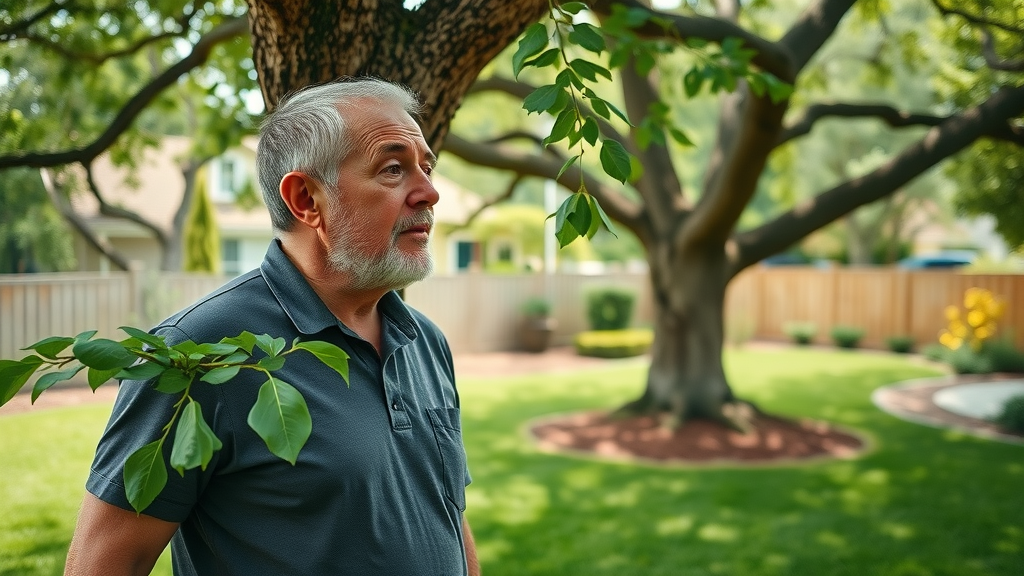
The Startling Reality: Over 60% of Urban Trees Display Stress Symptoms Annually
Urban environments subject trees to compacted soils, drought, pollution, and heat waves—contributing to widespread tree stress . Researchers from state universities estimate that more than half of all street and yard trees exhibit at least one significant symptom every summer. If unaddressed, these condition can lead to tree death , decrease property appeal, and disrupt neighborhood ecosystems.
Consider your local tree population: compacted soil from foot traffic, improper pruning, and amount of water delivered by inconsistent rainfall all create stress in trees. Urban trees, compared to their rural counterparts, fight an uphill battle and often lose—unless homeowners step in early.
What This Means for Your Yard: Why Recognizing Signs of Tree Stress Early Matters
Catching signs of stress early is not just about aesthetics—it's about safeguarding valuable assets in your landscape. Early intervention, such as proper watering or targeted pruning, can prevent minor symptoms from escalating into severe health issues for your stressed tree . A single lost season can affect a tree’s growth and resilience for years to come.
For homeowners, knowing how to spot the early stages of tree stress means avoiding the financial and emotional costs associated with replacing planted trees and maintaining strong curb appeal. By developing keen observation skills and practicing strategic tree care , you can keep your yard vibrant all year long.
What Are Signs of Tree Stress and Why Should Homeowners Care?
The term " tree stress " encompasses a broad range of symptoms resulting from environmental, biological, or human-related causes. Understanding signs of tree stress is essential for homeowners who want to protect their investment. Signs can include leaf discoloration, wilting, early leaf drop, dead branches, and stunted growth .
Left untreated, these stress symptoms can weaken a tree’s defenses against pests, insects and disease , and extreme weather events. Ultimately, failing to pay attention to the early warning signs could lead to tree death and diminish the beauty, shade, and ecological value of your home landscape.

Understanding Tree Stress: The Basics Everyone Should Know
Tree stress refers to any strain that disrupts a tree's normal physiological processes, making it more vulnerable to diseases and environmental threats. These stressors range from water deficits and nutrient imbalances to physical damage and pollution. Most trees exhibit subtle cues before severe problems develop—a helpful clue for vigilant homeowners.
By becoming familiar with typical versus unusual tree health features, you can begin to spot signs that your tree is in trouble. Carefully monitoring for changes in foliage, bark, and growth habits provides the first line of defense in tree care .
Not every symptom means a tree is doomed. Many trees recover from temporary stress if the root cause is addressed in time. However, ignoring persistent symptoms may result in long-term consequences and expensive removal.
The Connection Between Tree Health and Environmental Stresses
Environmental factors like drought, excessive rain, fluctuating temperatures, and pollution play a major role in inducing stress in trees . Prolonged exposure to these elements weakens a tree’s natural defenses, making it prone to secondary issues like road salt damage or hazardous pests.
Urban and suburban trees are especially susceptible because their roots often compete with turfgrass and other landscaping elements for water and nutrients. Soil compaction from foot traffic or construction further restricts access to necessary resources. Recognizing how your local environment influences tree health helps you target your care efforts for maximum impact.
In contrast, healthy trees in forests experience less abrupt change and stress, enabling them to adapt naturally. Awareness of these environmental pressures is one of the best ways to prevent and manage stress symptoms in your property’s trees.
Short-Term vs Long-Term Stress Symptoms in Stressed Trees
Short-term stress symptoms in trees often show up as leaf wilting, mild yellowing, or temporary leaf drop during heatwaves or drought. If addressed promptly—through proper watering or mulching—many trees will bounce back by the next season. However, ongoing symptoms like dead branches or tree trunk cracking signal deeper, chronic problems.
Long-term stress symptoms are more serious and may include recurring branch dieback, persistent fungal growth on the tree trunk , reduced foliage density, and stunted annual growth. Such conditions typically result from cumulative effects of repeated human activity, improper tree care, or lingering environmental damage.
To protect your tree health , it’s important to monitor both the leaves and the tree trunk . Addressing stress in its early stages reduces the risk of permanent damage and keeps planted trees —and your whole yard—looking their best.
- Leaf discoloration: Yellowing, browning, or spots outside normal seasonal changes
- Wilting: Leaves limp or droopy during heat despite adequate water
- Early leaf drop: Shedding leaves before the usual autumn period
- Dead branches: Bare or brittle limbs that do not leaf out in spring
- Stunted growth: Slow or halted annual growth compared to previous years
What You'll Discover About the Signs of Tree Stress
- How to spot early stress symptoms before damage escalates
- Key factors contributing to tree stress in summer
- Steps for effective tree care and stress recovery
- Expert tips for maintaining tree health year-round
Crucial Signs of Tree Stress: What to Watch for This Summer
The peak of summer brings with it unique challenges for trees. The most vulnerable period—long hot spells, drought, and sudden storms—often triggers the most common signs of tree stress . Knowing what to look for helps you respond before your trees suffer lasting harm.
Some symptoms show up gradually, while others (like a sudden wilting or dead branch ) may appear overnight. Homeowners who stay alert for these telltale warning signs can address problems and restore tree health more rapidly.
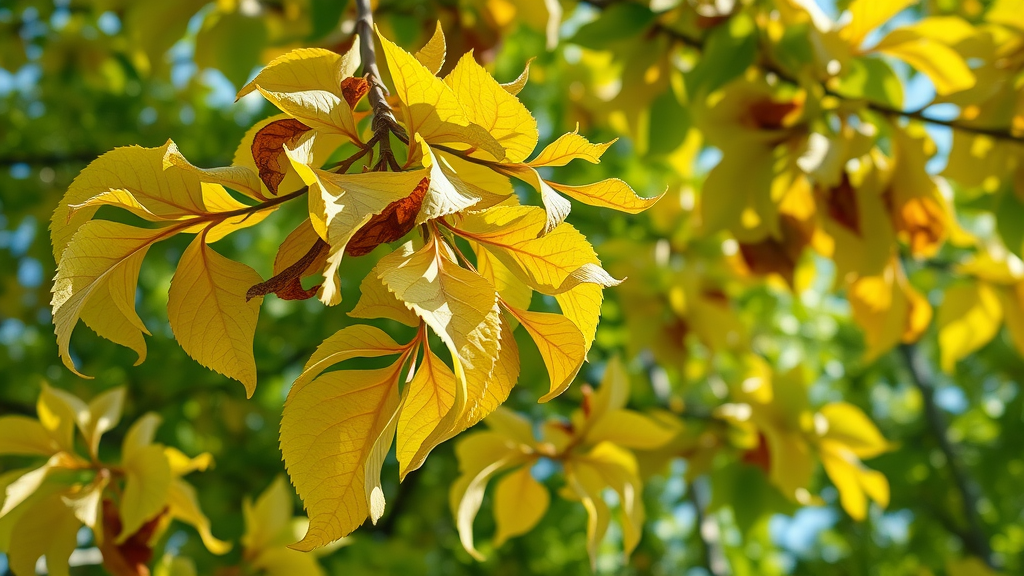
Unusual Leaf Changes: Yellowing, Browning, and Wilting as Stress Symptoms
The earliest indicator of a stressed tree is often a visible change in its leaves. Foliage might transition to pale yellow or deep brown well before the official start of autumn, signaling water scarcity or root problems. Leaf scorch —where leaf margins turn crispy and brown—often points to excessive heat, drought stress, or root damage from construction or compacted soil.
In some cases, you might notice leaves curling, drooping, or appearing thin. Healthy trees can sometimes shed a few leaves naturally, but unusual or widespread symptoms are cause for concern. Such changes usually start at the top or outer edges of the canopy and progress inward.
Monitor areas where road salt or chemicals may have splashed—these can quickly trigger abnormal leaf colors or wilting. Check for uniformity: if only one side is yellowing, the issue may stem from physical injury or root restriction on that side.
Premature Leaf Drop: Why Stressed Trees Lose Foliage Out of Season
When healthy trees are under stress, they sometimes drop their leaves too early as a survival tactic. In essence, premature shedding is the tree’s way of reducing the “work” its root system has to do when water or nutrients are scarce. If you notice leaves spiraling down in late summer—well before the natural autumn drop—you’re witnessing one of the classic signs of tree stress .
Early leaf drop can be triggered by a variety of factors, including intense heat, drought, soil compaction, root disturbance, or insect infestation. A stressed tree often prioritizes its core structure (roots and tree trunk ), sacrificing its leaves as a first line of defense.
If your yard or a local tree appears unusually bare during the summer months, it’s important to investigate and address the underlying issues before bigger problems arise.
Tree Trunk Issues: Cracking, Oozing, or Fungal Growth Indicating Tree Stress
The tree trunk is the backbone of every planted tree, delivering resources from roots to canopy. Telltale stress symptoms here include cracks, sap oozing from the bark, or mushroom/fungal growth at the base. These warning signs suggest potential internal injury, disease, or root decay.
Cracked bark, especially long vertical splits, may occur after strong winds, extreme heat, or frost heaving. Sap or “bleeding” from wounds can attract pests and increase vulnerability to diseases. Fungi growing on the trunk or root zone often indicates persistent dampness or deadwood inside the tree.
If untreated, such symptoms may eventually lead to tree death . Regular inspection of the trunk—especially after storms or construction near tree roots—can mean the difference between timely intervention and losing a mature specimen.

Stunted Growth and Dead Branches: Visual Tree Stress Red Flags
Notice a once-vigorous planted tree barely putting out new shoots? Stunted growth—slower height, thin canopies, or twigs with small, undersized leaves—suggests unresolved or chronic tree stress . Stress symptoms may persist for several seasons if root systems have been compromised or nutrients are lacking.
Dead branches , especially those high up or scattered throughout the canopy, indicate that parts of the tree are not receiving enough water and nutrients. They also provide easy entry points for insects and disease, accelerating decline. Sometimes, dead limbs appear suddenly after a severe weather event, construction, or an improperly timed prune (wrong time pruning).
Since dead branches are both a safety hazard and a health risk, removing them is a vital part of tree care . Routine assessment will help you catch and remediate problems while there’s still time for recovery.
“A single season of stress can reduce a tree’s lifespan by 10–30%, so early detection is crucial.” – Certified Arborist, Dr. Helen Morris
How Human Activity Contributes to Stressed Trees in Urban Landscapes
More often than not, human activity is a major culprit in the stress experienced by urban and suburban trees. From construction projects and soil compaction to improper maintenance, actions around your property can directly impact your tree health . Understanding these hidden contributors is vital for every responsible homeowner or property manager.
Even well-meant practices—like overzealous pruning or excessive watering—can do more harm than good if not matched to the tree species and environment. Identifying and changing these behaviors is essential for long-term tree care .
Construction and Soil Compaction: Hidden Causes of Tree Stress
Any building or landscaping project near established trees increases the risk of root injury and soil compaction . Heavy equipment, foot traffic, and new structures disrupt the soil structure, squeezing out oxygen and making it more difficult for roots to absorb water and nutrients.
Roots are often more widespread than the canopy, so activities even several feet from the trunk can have long-lasting consequences. Soil compaction is a notoriously silent killer—trees may look fine initially, but as water and nutrient uptake decrease, stress symptoms intensify year after year.
When planning any site work near your trees, protect the root zone and minimize any activities that break up or seal the surrounding soil. A little foresight can prevent the slow decline of cherished landscape features.
Improper Tree Care Practices: Over-Pruning and Watering Mistakes
While regular tree care helps keep healthy trees strong, over-pruning or pruning at the wrong time weakens a stressed tree . Removing too many live branches reduces the tree’s ability to photosynthesize, slowing recovery and exposing trunks to sunscald.
Likewise, both overwatering and underwatering can drastically affect tree health . Trees and shrubs require the right amount of water—too much suffocates roots while too little causes wilting and leaf scorch. Many homeowners struggle to provide optimal irrigation, especially during unpredictable summer weather.
To ensure proper watering, check soil moisture before watering and adjust schedules based on temperatures and rainfall. When in doubt, consult a certified arborist who can provide species-specific advice.
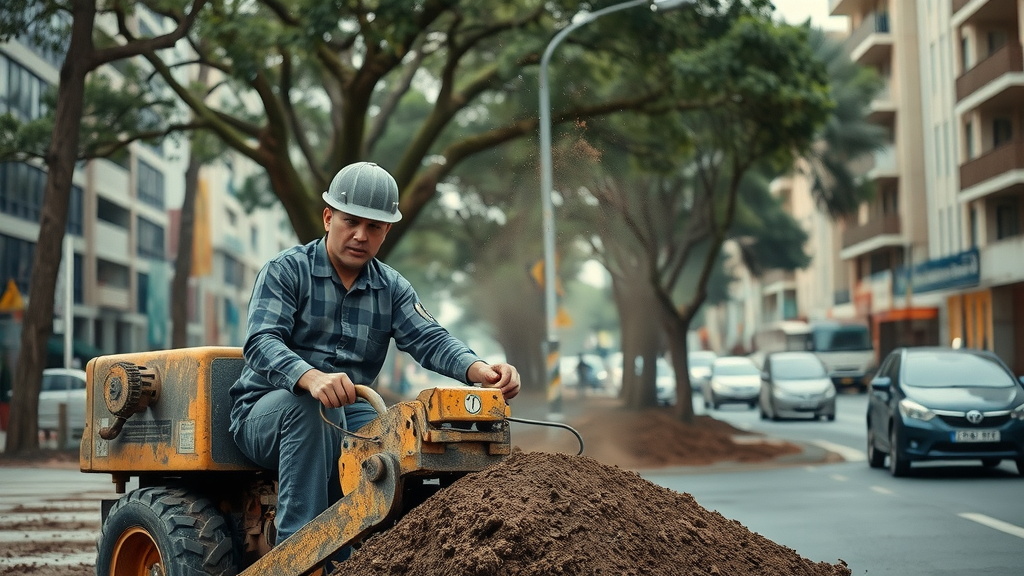
Heat Island Effects and Pollution: Urban Tree Health Under Siege
City landscapes are particularly harsh environments for trees due to the heat island effect —paved surfaces and buildings trap heat, raising area temperatures. Elevated summer heat, combined with reduced air movement and reflected sun, causes dehydration, leaf scorch , and even trunk splitting.
Pollution compounds these issues, clogging leaves and stomata with dust and chemicals. Road salt runoff and vehicle exhausts add further toxicity, making it harder for trees to detoxify and recover. In many cases, such chronic environmental stress is the direct result of human activity unique to urban and suburban areas.
Adapting your tree care routines to account for these stressors—like mulching and selecting pollution-tolerant tree species —can improve the odds for your landscape’s long-term health.
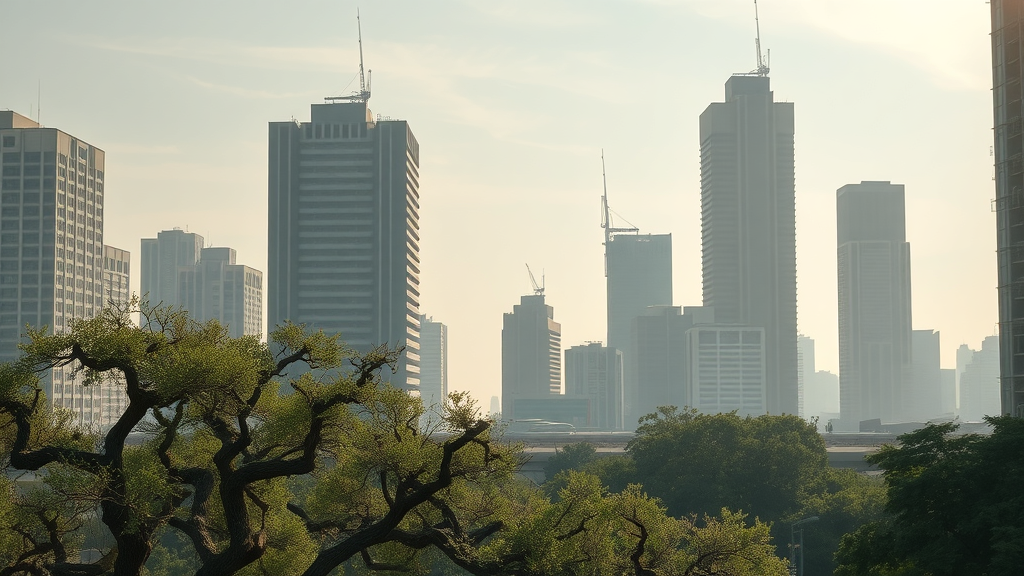
Diagnosing, Monitoring, and Documenting Tree Stress Symptoms
Effective tree care starts with routine observation. Diagnosing tree problems can feel daunting, but a systematic approach enables you to distinguish normal seasonal changes from genuine signs of tree stress . Keeping written or photographic records each season helps track changes and informs timely interventions.
By regularly checking leaves, branches, and tree trunk , you gain a clearer picture of overall tree health . Early detection allows you to act fast—often preventing minor issues from escalating into costly emergencies.
Systematic Checks: How to Tell if a Tree is Stressed
Begin with a close inspection under good lighting. Look for leaf discoloration , inspect for any premature leaf drop, and scan the tree trunk for cracks, oozing, or fungal growth. Next, step back and evaluate the tree’s overall shape—is the canopy thinning? Are there more dead branches than usual?
Check the soil at the base for proper moisture and any signs of pest activity or recent construction. Taking seasonal photos is a smart way to document subtle progression in stress symptoms . If you notice new or worsening changes, consider a certified arborist checkup.
Regular monitoring and note-taking are as important as watering or fertilizing—helping you catch issues before they diminish your landscape’s beauty or value.
5 Warning Signs of Stress Every Homeowner Should Recognize
Recognizing the top five signs of tree stress gives you a head start on remediation and prevention:
- Unusual leaf color or scorch
- Premature leaf or needle drop
- Cracking or oozing on trunk surfaces
- Dead or dying branches in the canopy
- Stunted or abnormally slow growth rates
Homeowners who learn to identify these warning signs can intervene sooner, addressing problems before irreversible tree death occurs.
| Warning Sign of Tree Stress | Characteristic of a Healthy Tree |
|---|---|
| Yellow or brown, wilted leaves | Glossy, rich green foliage throughout growing season |
| Premature leaf drop (summer or early fall) | Full leaf canopy, normal autumn shedding |
| Trunk cracks or oozing sap | Unblemished, intact bark with no sap leakage |
| Dead or dying branches | All branches with healthy, flush growth |
| Stunted growth or reduced annual shoot extension | Vigorous new growth each season |
Addressing the Signs of Tree Stress: Immediate Steps and Ongoing Tree Care
If you observe one or more signs of tree stress , swift action can make all the difference. Begin by identifying and removing the cause of stress, then provide targeted tree care to support recovery. While some interventions can be performed by attentive homeowners, others require the expertise of a certified arborist —especially for severe or unexplained symptoms.
Prioritize safety: dead limbs or unstable trees pose a significant hazard and should be addressed promptly. Timely mulching, soil aeration, and proper watering routines are your best frontline defense.
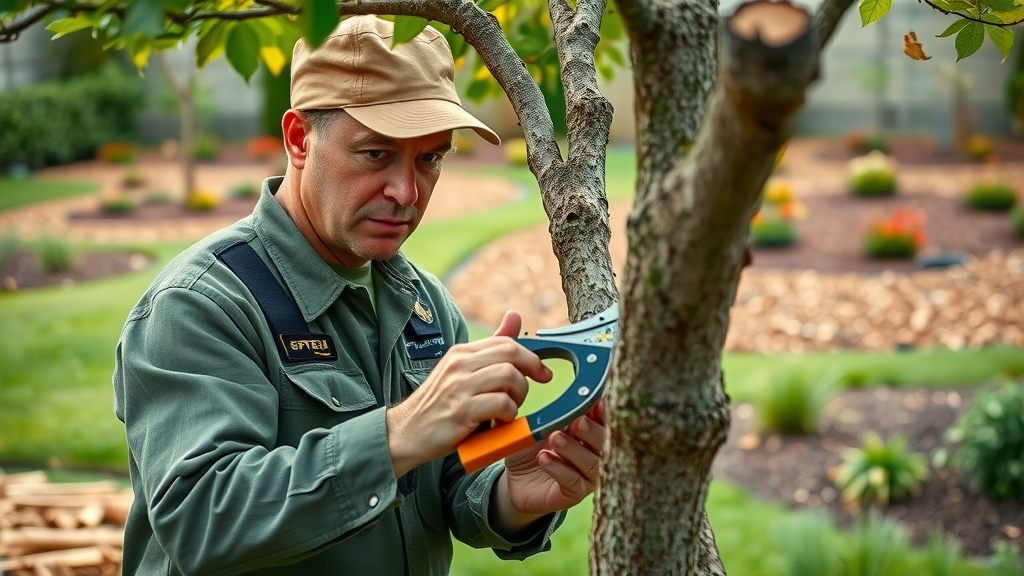
How to Fix a Stressed Tree: Practical Steps for Recovery
Rehabilitating a stressed tree involves removing the root cause, creating optimal growing conditions, and carefully monitoring progress. Many trees, given the chance, can recover even after significant stress symptoms .
Follow this practical, step-by-step approach:
- Prune out dead wood and damaged branches to prevent infection and redirect energy to healthy growth.
- Apply mulch around the root zone—2–4 inches deep, keeping it several inches away from the trunk—to retain moisture and regulate soil temperature.
- Adjust watering: give deep, infrequent soakings rather than daily light sprinklings, tailoring to the specific tree species and soil type.
- Use slow-release, balanced fertilizer only if a soil test reveals a deficiency; avoid over-fertilizing, which can increase stress.
- Avoid any construction or soil disturbance within the root zone during recovery.
By following these steps, you can address the most common signs of tree stress and boost your trees’ resilience.
When to Call a Professional Arborist for Stressed Trees
Some symptoms—like persistent trunk oozing, widespread canopy dieback, or sudden tree death —require immediate expert attention. Call a certified arborist if:
- The tree leans or shows root upheaval
- There’s extensive fungal growth, trunk damage, or unexplained decline
- Repeated interventions haven’t improved tree health
- Your tree is a large, mature specimen or near a structure
Arborists can diagnose hidden diseases and prescribe tailored solutions—often saving valuable landscape icons.
“Identifying stress early makes all the difference in saving valued landscape trees.” – ISA Certified Arborist
Long-Term Strategies for Enhancing Tree Health and Preventing Tree Stress
Ongoing attention is the secret to resilient landscapes. Annual inspections, consistent cultural care, and smart species selection can reduce the odds your trees ever develop chronic signs of stress .
Incorporate preventive tree care measures into your seasonal maintenance, and your trees will reward you with shade, beauty, and longevity.
Routine Tree Care Tips for Avoiding Recurring Stress Symptoms
- Schedule annual tree health assessments by a certified expert
- Apply mulch properly—never pile against the trunk
- Adjust irrigation according to seasonal needs, especially during heat waves
- Promote soil health: reduce compaction, avoid chemicals, and add organic matter
Regular, preventive action reduces the likelihood that stress symptoms escalate from mild to severe.
Tree Stress-Resistant Species: Best Trees for Urban and Suburban Yards
Choosing the right tree species for your climate and soil is one of the best ways to future-proof your yard against stress. Some varieties—such as Kentucky Coffee Tree, Honeylocust, Ginkgo, and certain oaks—are naturally more tolerant of drought, compact soils, and pollution. Newer cultivars bred for urban resilience can also be excellent additions.
Before planting, consult with a state university extension, tree nursery, or certified arborist to match the best trees for your unique site. Resilient species help reduce maintenance headaches and maximize the health of your urban or suburban landscape.
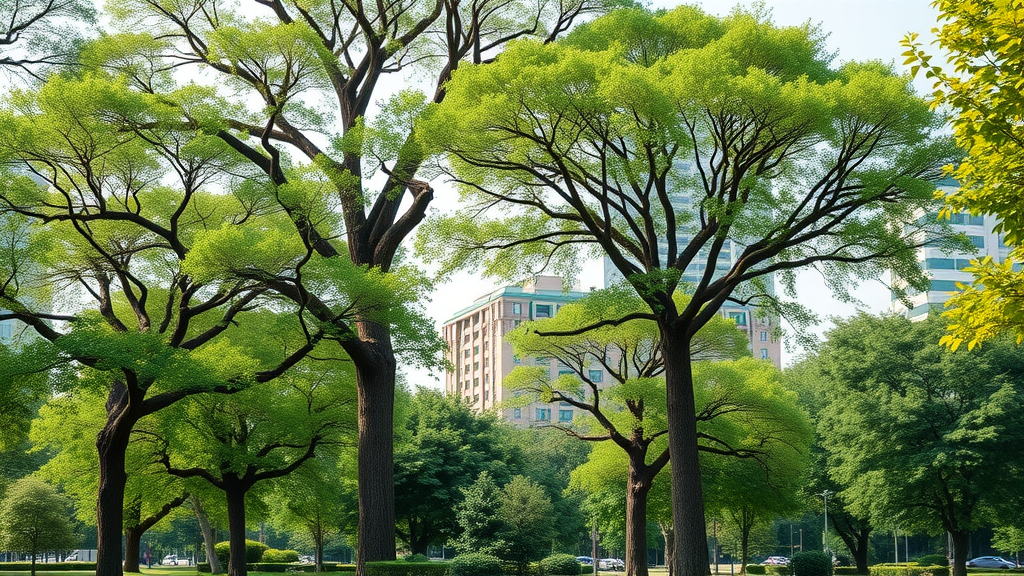
People Also Ask: Your Key Questions on the Signs of Tree Stress Answered
How to tell if a tree is stressed?
To tell if a tree is stressed , look for changes such as yellowing or scorched leaves, premature leaf drop, cracks or oozing on the trunk, dead branches, or slowed annual growth. Compare your tree to healthy neighbors or check for unusual patterns not explained by the weather. Regular observation is key to prompt diagnosis and intervention.
What are 5 warning signs of stress?
Five common signs of tree stress include:
- Yellowing or browning leaves outside of seasonal change
- Early leaf or needle drop
- Cracks or sap oozing from trunk
- Dead or dying branches
- Noticeably reduced growth compared to previous seasons
How to fix a stressed tree?
Start by removing dead wood and sources of root disturbance. Apply mulch, water deeply and less frequently, and adjust your care for the specific species. Limit construction near the roots. For serious symptoms, seek advice from a certified arborist to identify and treat underlying issues quickly.
How do trees respond to stress?
Stressed trees often drop leaves prematurely, slow their growth, allow branches to die back, or develop trunk injuries. Some may survive brief stresses, but repeated or severe symptoms can weaken defense systems, making them more prone to insects and disease. Quick action promotes recovery and long-term health.
Your Smart Guide to Summer Tree Care: Key Takeaways for Homeowners
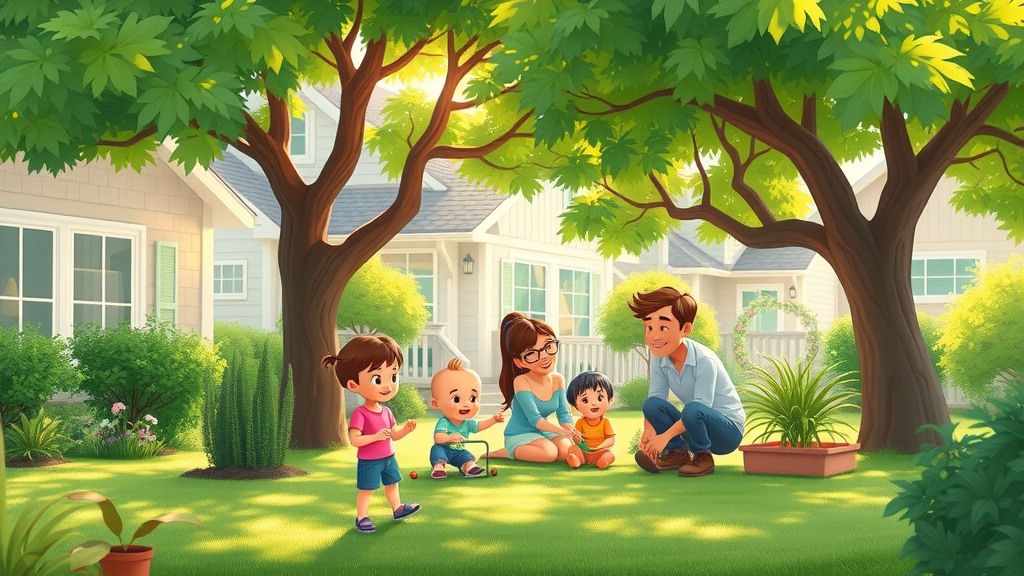
- Early identification of signs of tree stress can prevent irreversible damage
- Proper tree care includes regular monitoring, correct watering, and soil management
- Seek professional consultation if stress symptoms persist or worsen
Expand Your Knowledge and Protect Your Trees
Stay ahead of threats to your landscape and save on future repairs— grow your landscaping expertise . Call 203-271-7991 or visit TreeGuardianNews.com to subscribe for more expert tree care updates and advice!
To deepen your understanding of tree stress and its indicators, consider exploring the following resources:
-
The Arbor Day Foundation’s article, “Are Your Trees Stressed?” , provides a comprehensive overview of common stress symptoms, including canopy dieback, trunk cracks, and premature leaf drop, along with preventive measures to maintain tree health.
-
Overberg Arborists’ guide, “Are My Trees Stressed? How to Spot the Warning Signs” , offers practical advice on identifying stress indicators such as wilting leaves, dead branches, and trunk cracks, emphasizing the importance of early detection and professional assessment.
By consulting these resources, you’ll gain valuable insights into recognizing and addressing tree stress, ensuring the longevity and vitality of your landscape.
 Add Row
Add Row  Add
Add 

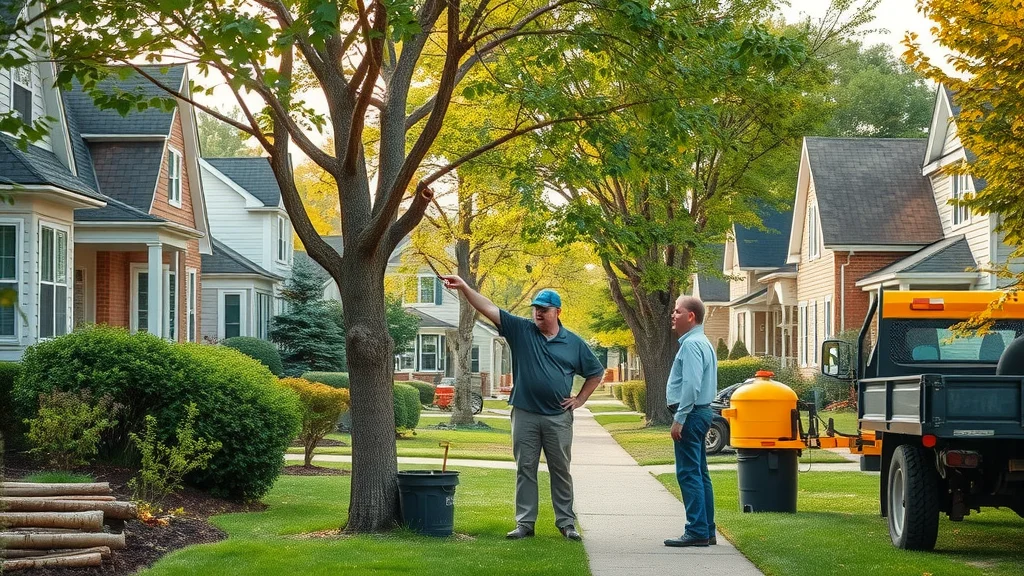


Write A Comment